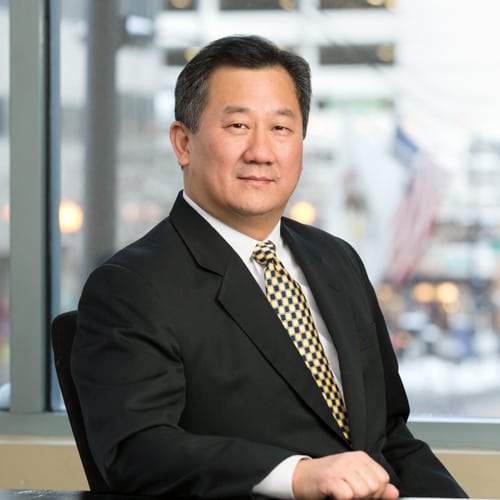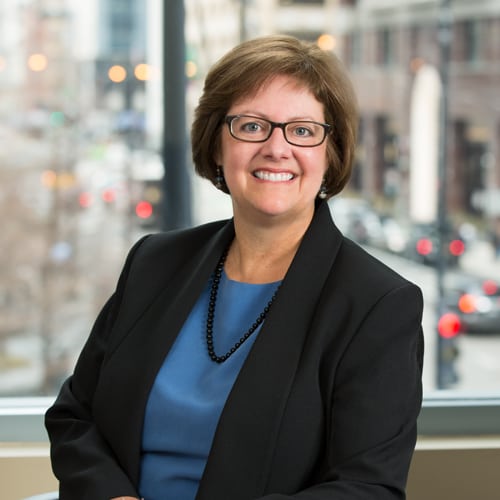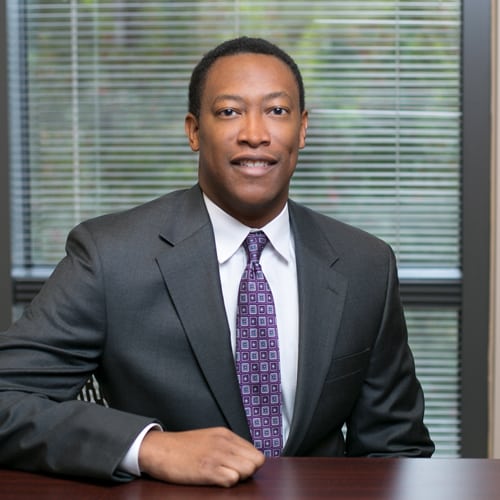As a core principle on which it was founded, Litchfield Cavo LLP strives to show respect for others in our daily interactions with all individuals. With our Firm’s continued growth and diversification, we are proud of our advancement in this area and recognize the importance of an ongoing commitment to diversity, equity and inclusion. We strive to create an equitable work environment that appreciates each individual’s contributions to our Firm’s community and fosters a more diverse, as well as inclusive, talent force. Visible examples of our commitment to diversity include: the majority of our Executive Committee is diverse; all of our Firm’s administrative department heads, including marketing, accounting, human resources and billing, are diverse; the majority of our attorneys are diverse; and, our Firm’s assistant managing partner is diverse.
Our Diversity | Approach
Litchfield Cavo broadly defines diversity as differences among people, including race, color, religion, national origin, age, gender, gender identity or expression, marital status, sexual orientation, ancestry, physical or mental disability and veteran status. We continue to make strides with our ongoing diversity initiative, including the following endeavors:
- Ensuring our Firm’s leadership positions are diverse and inclusive;
- Advocating for family-friendly policies, including flexible work schedules, remote work options and paid parental leave;
- Creating a compensation system focused on eliminating subjectivity and possible unconscious bias, thereby promoting pay equity;
- Recognizing important events, including International Women’s Day and Global Diversity Awareness Month;
- Participating in, as well as sponsoring, diverse job fairs;
- Demonstrating an ongoing commitment to improving the hiring, retention and promotion of diverse individuals;
- Encouraging participation from all offices so that there is geographic representation in promoting and advancing the Firm’s diversity, equity and inclusion goals;
- Fostering a platform for the Firm’s future leaders to promote and advance the Firm’s commitment to diversity, equity and inclusion through the Firm’s Associate Subcommittee;
- Supporting an inclusive culture by participating in diverse membership organizations, community events, bar associations and affinity groups; and,
- Enhancing awareness and appreciation throughout our Firm’s community through mentorship and educational seminars.
Committee
Our Diversity, Equity and Inclusion Committee meets on a monthly basis and reports directly to the Firm’s executive committee. Our Committee membership includes the Firm’s assistant managing partner and former general counsel, our Firm’s founding partners, a current member of the executive committee and local office managing partners. The Committee includes an active Associate Subcommittee that participates in monthly Committee meetings.
Litchfield Cavo Recognizes the History of Veterans Day
History of Veterans Day
Veterans Day (originally known as Armistice Day) is a federal holiday observed annually on November 11 and honors military veterans. Armistice Day has its genesis in World War I. World War I officially ended on June 28, 1919, when the Treaty of Versailles was signed. However, it is important to note that the fighting stopped seven months earlier when an armistice (temporary cessation of hostilities) between the Allied nations and Germany went into effect on the eleventh hour of the eleventh day of the eleventh month. Therefore, November 11, 1918, is generally regarded as the end of “the war to end all wars.” In November 1919, President Woodrow Wilson proclaimed November 11th Armistice Day. In so doing he said:
“To us in America, the reflections of Armistice Day will be filled with solemn pride in the heroism of those who died in the country’s service and with gratitude for the victory, both because of the thing from which it has freed us and because of the opportunity it has given America to show her sympathy with peace and justice in the councils of the nations…”
The original concept was to have a brief suspension of business at 11:00 a.m. with parades and public gatherings.
An Act of Congress approved on May 13, 1938, made the 11th of November a legal holiday known as “Armistice Day.” Armistice Day was primarily a day set aside to honor veterans of World War I, however, in 1945, World War II veteran Raymond Weeks had the idea to expand Armistice Day to celebrate all veterans rather than just the ones who died in World War I. He led a delegation to General Dwight D. Eisenhower who supported the idea. The 83rd Congress, at the urging of U.S. Representative Ed Reed, Weeks, and veterans service organizations, amended the Act of 1938 by striking out the word “Armistice” and inserting in its place the word “Veterans.” In 1954, President Dwight D. Eisenhower officially changed the name of the holiday from Armistice Day to Veterans Day. Weeks organized the first Veterans Day celebration in 1945 in Alabama and every year until he died in 1985. In 1982, he was honored by President Ronald W. Reagan with the Presidential Citizenship Medal. Weeks was also named the ‘Father of Veterans Day’ by Elizabeth Dole in a briefing for President Reagan for the Presidential Citizens Medals.
The Veterans Day National Ceremony is held each year on November 11 at Arlington National Cemetery in Arlington, Virginia. During the ceremony, which commences at 11 a.m. The traditions are firmly established: a combined color guard representing all military services executes “present arms” at the Tomb of the Unknown Soldier, the president lays a wreath, and a bugler plays “Taps,” the haunting bugle call used at U.S. military funerals.
Interesting Facts About Veterans Day
- Why is Veterans Day November 11? This particular date recognizes the Armistice of 11 November 1918, the formal agreement that marked the official end of World War I. On the 11th hour of the 11th day of the 11th month in 1918, allied forces and Germany came together to sign the peace treaty.
- Veterans Day was briefly celebrated in October. Congress signed the Uniform Holiday Bill in 1968 to ensure that a few federal holidays – Veterans Day included – would be celebrated on a Monday. Officials hoped it would spur travel and other family activities over a long weekend, which would stimulate the economy. On October 25, 1971, the first Veterans Day under this new bill was held. There was a considerable confusion concerning the change, and many states were unhappy, choosing to continue to recognize the day as they previously had—in November. On September 20, 1975, President Gerald R. Ford signed another law (Public Law 94-97), which returned the annual observance to its original date starting in 1978.
- Veterans Day does not have an apostrophe, according to the Department of Defense.
- Veterans Day is one of 3 unique holidays for veterans. Memorial Day, Veterans Day and Armed Forces Day each serve a specific purpose.
- What is the difference between Memorial Day, Veterans Day and Armed Forces Day? Veterans Day honors and celebrates all veterans. Memorial Day honors those who died in the service of their country. Armed Forces Day recognizes all those who are currently serving.
- Several other countries also celebrate Veterans Day. Canada and Australia both call November 11 “Remembrance Day.” Canada’s observance is pretty similar to our own, except many of its citizens wear red poppy flowers to honor their war dead. In Australia, the day is more akin to our Memorial Day. Great Britain and many of the countries in the Commonwealth call it “Remembrance Day,” too, but observe it on the Sunday closest to November 11 with parades, services and two minutes of silence in London to honor those who lost their lives in war.
- Poppies are the flowers commonly used as a symbol of war remembrance and veteran support. A poem written by World War I Col. John McCrae, called “In Flanders Fields,” describes McCrae’s grief over the deaths of soldiers on Flanders’ battlefields in western Belgium and northern France. McCrae, a surgeon with Canada’s First Brigade Artillery, had the poem paired with an image of bright red flowers blooming among rows of white crosses, serving as a rallying cry to all who fought in the war.
- According to the US Department of Veterans Affairs, of the 16.1 million who served in WWII, approximately 119,500 are alive today (407,000 died in WWII).
- 8 million veterans served during the Korean War (54,200 died in the War).
- 7 million veterans served during the Vietnam War (58,000 unaccounted for or died).
- 4 million veterans served in the Gulf War era.
- 10% of living veterans are women.
- 5 million – the approximate number of veterans in the United States.
- 9 million – the number of veterans over the age of 65.
- 06 million – the number of veterans receiving disability compensation.
- 2 million – the number of female veterans of those receiving disability compensation.
- 35 million – the number of veterans in California, the third highest number in the country.
- 67 million – the number of veterans in Texas, the highest number in the country.
- 33,129 – the number of veterans who experience homelessness as of January 2022.
- 50% – the percentage of veterans experiencing homelessness who also live with a mental illness like PTSD.
Ways to Celebrate Veterans on Veterans Day
- Serve the Community: every community has veterans service organizations (VSOs). These organizations usually focus on providing support to veterans and their families on issues from PTSD to housing to career transition.
- Provide supplies to a veteran homeless shelter.
- Honor those who have served by visiting a National Park with direct connections to the American military (free on November 11).
- November 11, 2023, Chicago Veterans Day Commemoration Ceremony at Soldier Field.
- Help prevent veteran suicide.
- Since 2001, approximately 17 veterans commit suicide each day. During the early years there were estimates of 22 service members losing their personal battles to suicide every day. This gave rise to the #22 A Day movement where citizens, service members and veterans raise funds for veteran mental health organizations. Participants run, walk, bike, yoga or do 22 push-ups for 22 days to raise money for vet organizations helping at risk veterans. (source: 2022 VA Suicide Prevention Report)
- National Warrior Call Day: All seven former Veterans Affairs Secretaries are joining with a coalition of advocacy groups to support and recognize National Warrior Call Day on November 12. The Secretaries are encouraging citizens to reach out and connect with service members and veterans in an attempt to identify service members and veterans at risk of suicide.
- Test your Veterans Day knowledge.
To download a copy of this document, click here.
Recognizing German-American Heritage Month
The German immigrant story is a long one—a story of early beginnings, continual growth, and steadily spreading influence. Germans were aboard the first ships that came ashore at Jamestown, and were among those who built the rockets that took men to the moon. In the years in between, they moved into nearly every corner of the U.S., tried their hand at nearly every trade and pursuit, and helped shape some of the fundamental institutions of American life. Today, more than 40 million Americans (approximately 15% of U.S. population) claim German ancestry—more than any other group except the British.
German-American Day is a holiday in the United States, observed annually on October 6. It celebrates German-American heritage and commemorates the founding of Germantown, Pennsylvania (now part of Philadelphia) in 1683. Originally known under the rubric of “German Day,” the holiday was celebrated for the first time in Philadelphia in 1883, on the occasion of the 200th anniversary of the founding of Philadelphia. Similar celebrations developed later in other parts of the country. The custom died out during World War I as a result of the war, but the holiday was revived in 1983 when President Ronald Reagan proclaimed October 6 as German-American Day to celebrate and honor the 300th anniversary of German immigration and culture in the United States. On August 6, 1987, Congress approved S.J. Resolution 108, designating October 6, 1987, as German-American Day. It became Pub. L. 100–104, 101 Stat. 721 when President Reagan signed it on August 18. A proclamation (#5719) to this effect was issued on October 2, 1987, by President Reagan in a formal ceremony in the White House Rose Garden, at which time the President called on Americans to observe the day with appropriate ceremonies and activities. Presidents since then have continued to make proclamations to observe German-American Day.



